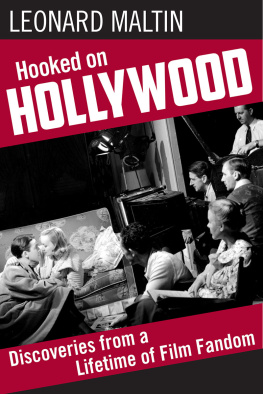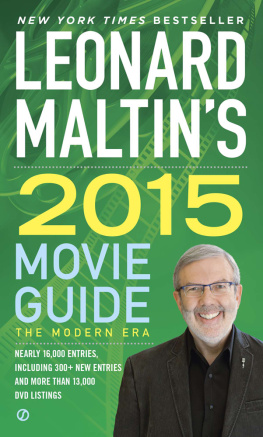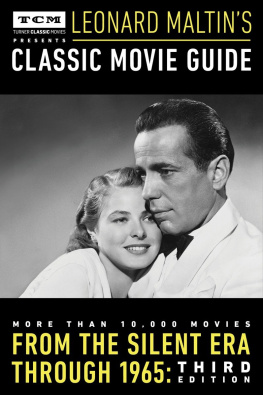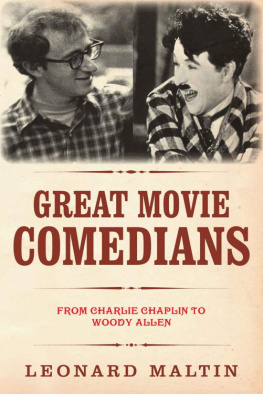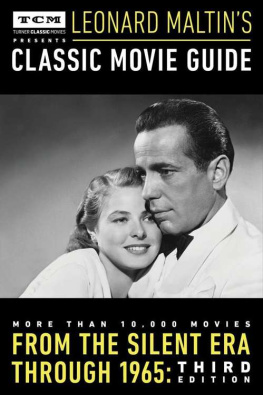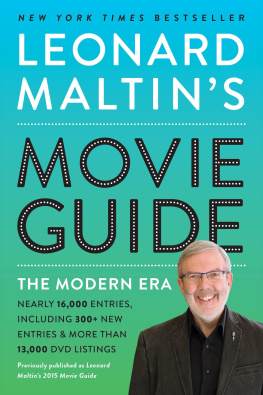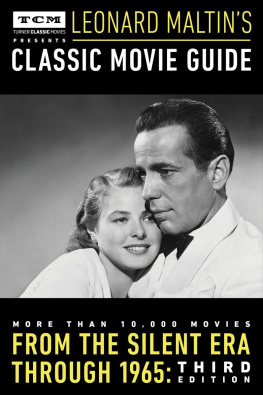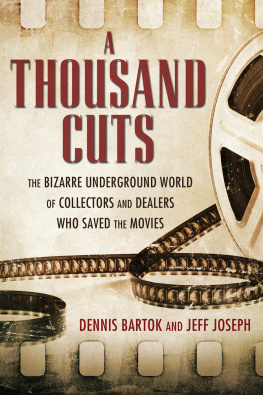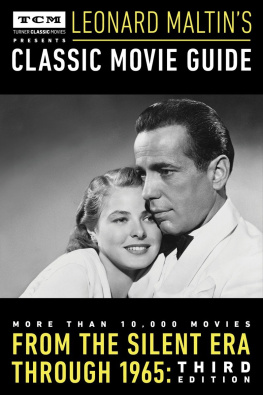

2018 by JessieFilm Inc.
All rights reserved. No part of this book may be reproduced or transmitted in any form or by any means, electronic or mechanical, including photocopying, or by an information storage and retrieval system without permission in writing from the publisher.
Portions of this book originally appeared in Film Fan Monthly and Leonard Maltins Movie Crazy newsletter.
Photo credits and acknowledgments: Warner Bros., Columbia Pictures, 20th Century Fox, MGM, United Artists, Universal Pictures, Paramount Pictures, The Walt Disney Company, Hal Roach Studios, RKO Radio Pictures, Republic Pictures, Academy of Motion Picture Arts and Sciences, CBS, ABC Television, NBC, Howard Green, Tracey Goessel, Suzanne Lloyd, John McElwee, Marc Wanamaker, Peggy Webber, Paul Wurtzel, Arthur Gardner.
Published by GoodKnight Books, an imprint of Paladin Communications, Pittsburgh, Pennsylvania.
www.goodknightbooks.com
Printed in the United States of America
Library of Congress Control Number: 2018936920
ISBN 978-0-9983763-9-4
ISBN 978-1-7322735-0-4
ISBN 978-1-7322735-1-1
ISBN 978-1-7322735-2-8
Book and cover design by Sharon Berk.
To the women in my life, who make everything possible: Alice and Jessie.
CONTENTS
INTRODUCTION
Being your own editor and publisher is a heady experience. Just ask Charles Foster Kaneor if hes not available, ask me. I embarked on my first publishing venture when I was in the fifth grade and kept at it for years to come.
When I was 13 I was an avid reader of Forrest J. Ackermans Famous Monsters of Filmland magazine, like so many baby boomers. (Others include Steven Spielberg and Stephen King.) In one issue he published a survey of fanzinesthat is, amateur magazines that dealt with film history, science fiction, and other related topics. I promptly submitted articles to two of them: The 8mm Collector, which was published by furniture dealer Samuel K. Rubin in Indiana, Pennsylvania, and Film Fan Monthly, which came out of Vancouver, Canada, courtesy of Daryl Davy. They both accepted my submissions; only then did I tell them I was 13. Sam didnt care and Daryl confessed that he was 19! They gave me the thrill of seeing my first bylines in print. There was no money involved, as this was a labor of love for all concerned. (The 8mm Collector survives today as Classic Images, with Bob King as editor.)
I became a regular contributor to both magazines while publishing my own humble journal called Profile, which was literally cranked out on a mimeograph machine. Two years later, in 1966, Daryl Davy told me he no longer had the time to put out a monthly magazine and wondered if I would be interested in taking over Film Fan Monthly. Of course I would! He had 400 subscribers, mostly in North America but also in Australia, New Zealand, and even Western Europe. Whats more, he was professionally printed, which would liberate me from the ink-stained mimeograph and enable me to illustrate my articles with movie stills. I assumed ownership in May of 1966 with issue #59. My cover was adorned with the face of Robert Benchley, in a portrait still I bought for 50 cents from Manhattan movie memorabilia dealer Henry Kier.
I continued writing, editing, publishing, stamp licking, envelope stuffing, and post office schlepping for the next nine years. Fortunately, I had help along the way. My original grade-school partner in crime was Barry Ahrendt. Barry Gottlieb joined me for Profile, integrating articles about his favorite subject, magicians. (I served as Barrys assistant at a handful of childrens birthday party gigs.) Warren Dressler then became Film Fan Monthlys business manager until he went off to college, whereupon my father gamely assumed those responsibilities. My pal Louis Black asked why he wasnt credited in the magazine, and I responded, Because you didnt do anything. He was still a bit miffed so in the next issue I added to the masthead Friend in need: Louis Black. The next month it read Friend indeed: Louis Black. For the next nine years I concocted a different title for Louis every month.
Once the magazine established itself I didnt have to write every article. I was grateful to receive contributions from a number of talented writers who didnt mind working for free, just to have an outlet for their work.
I was 15 when FFM came into my life, at which point schoolwork took a definite back seat. Fortunately, I was able to slide by and continued doing so through four years at New York Universityby which time I had sold my first books to New American Library. With each passing year it became more difficult to justify the time and effort I was expending on the magazine, and when I got married at age 24 and started paying rent, it seemed the right moment to retire. Many readers blamed my bride and thought of Alice as my Yoko Ono, which simply wasnt the case. What had begun as a genuine labor of love had become a chore.
Fortune smiled on me and I was able to make a living as a freelance writer and author. Some years after that I stumbled into a television career. But every now and then I longed for the complete freedom of writing whatever pleased me with no one looking over my shoulder and second-guessing my decisions.
The turning point couldnt have been more unpredictable. I sold an article to Vanity Fair, for more money than Id ever been paid for such a gig, in the year 2000. It was based on my discovery of Orson Welles hitherto-unknown flirtation with Warner Bros. to direct and star in The Man Who Came to Dinner in 1941, just before the debut of Citizen Kane. I was thrilled that my research coup (courtesy of the Warner Bros. Archives at USC) would reach such a wide, mainstream audience. But it was not to be. The magazine killed the piece several months after I signed a contract with them because they published an article that mentioned Dinner playwright George S. Kaufman and thought it would be redundant. At least, thats what they told me. I was paid my full fee, which I appreciated, and recovered the rights to the article. Thats what led me to embark on my second self-publishing venture, Leonard Maltins Movie Crazy, in 2001. Contents of the first 18 issues were assembled in a paperback book of the same name, published by Mike Richardson of Dark Horse Comics under his M imprint.
I wrote every word of Movie Crazy, not because I didnt have offers from possible contributors but because I wanted to. This was my baby, a place to print interviews Id never published before and articles I was inspired to write. I even got to draw on my lifelong collection of movie stills. The heavy lifting of preparing this material digitally and dealing with the printer and post office was assumed by my computer tutor, Jeanne McCafferty.
Alas, my attempt to maintain a quarterly schedule ran aground after just a few years. While I enjoyed working on every issue I had to admit to myself that it was starting to feel like a chore. I recognized that feeling and ultimately acted on it, 10 years after launching the (very) non-profit venture.
Still, I am proud of what I accomplished and appreciate this opportunity to bring my work to a wider audience than I was able to reach on my own. For this I thank Robert and Mary Matzen, whose enthusiasm and encouragement have spurred me on.
In choosing a title for this volume, we considered a number of possibilities but finally decided to keep it simple. Ive been hooked on Hollywood since I was a kid, and Ive spent more than half a century making discoveries about the period known as the Golden Age. This collection of articles and interviews reflects that lifelong pursuit.
Next page
